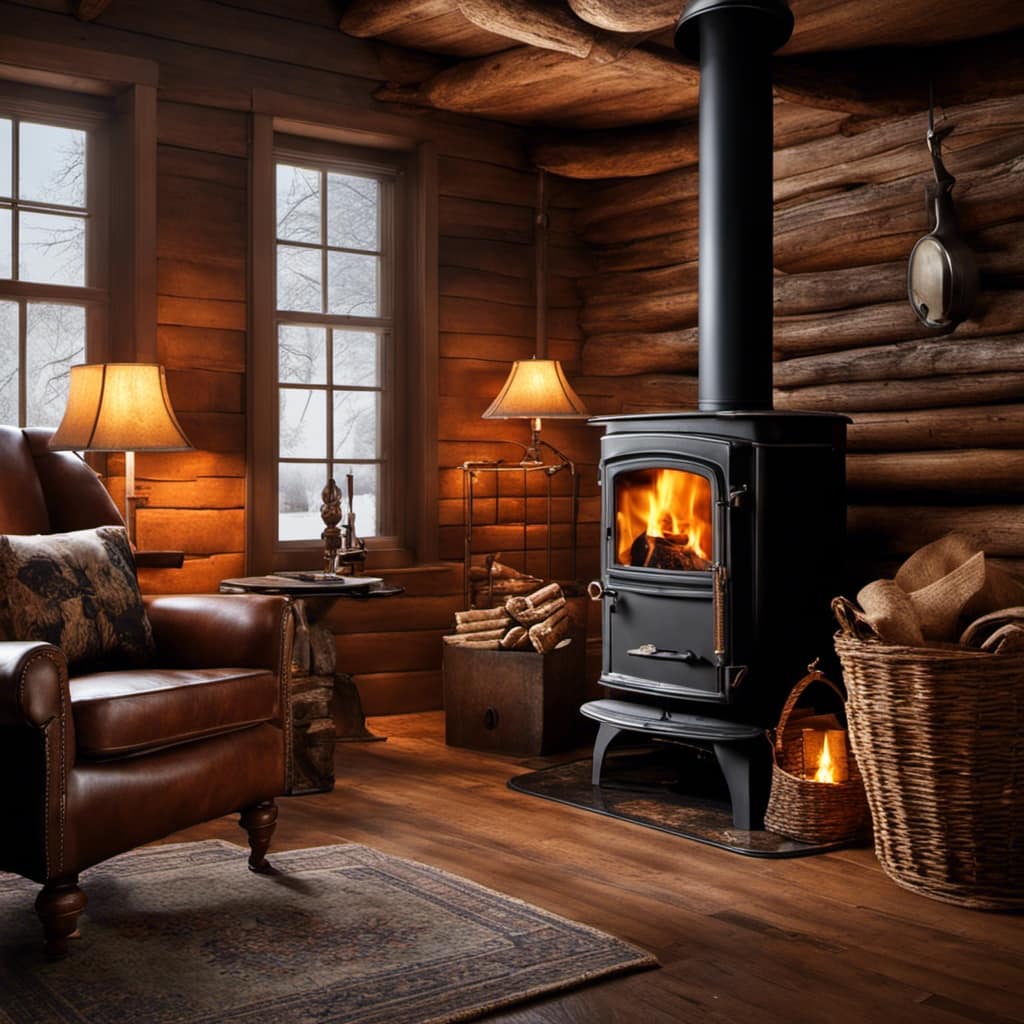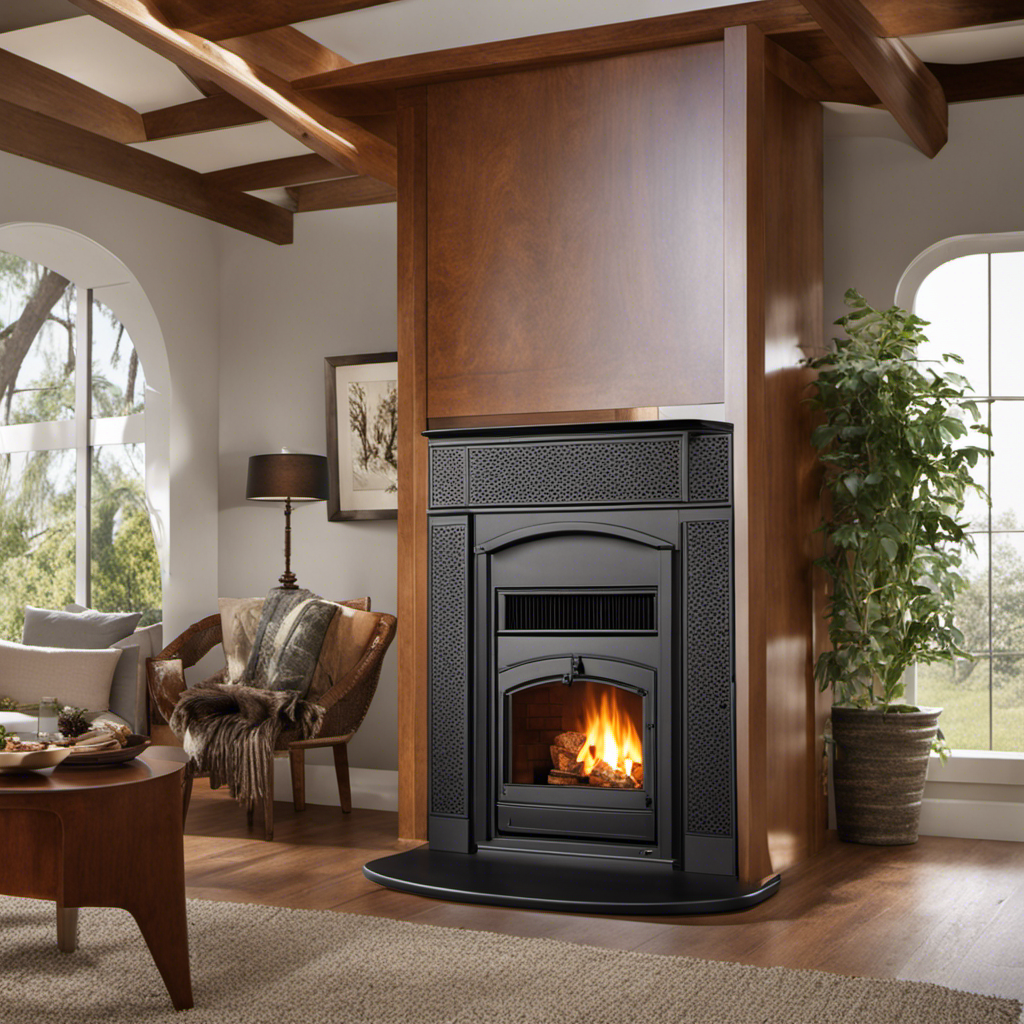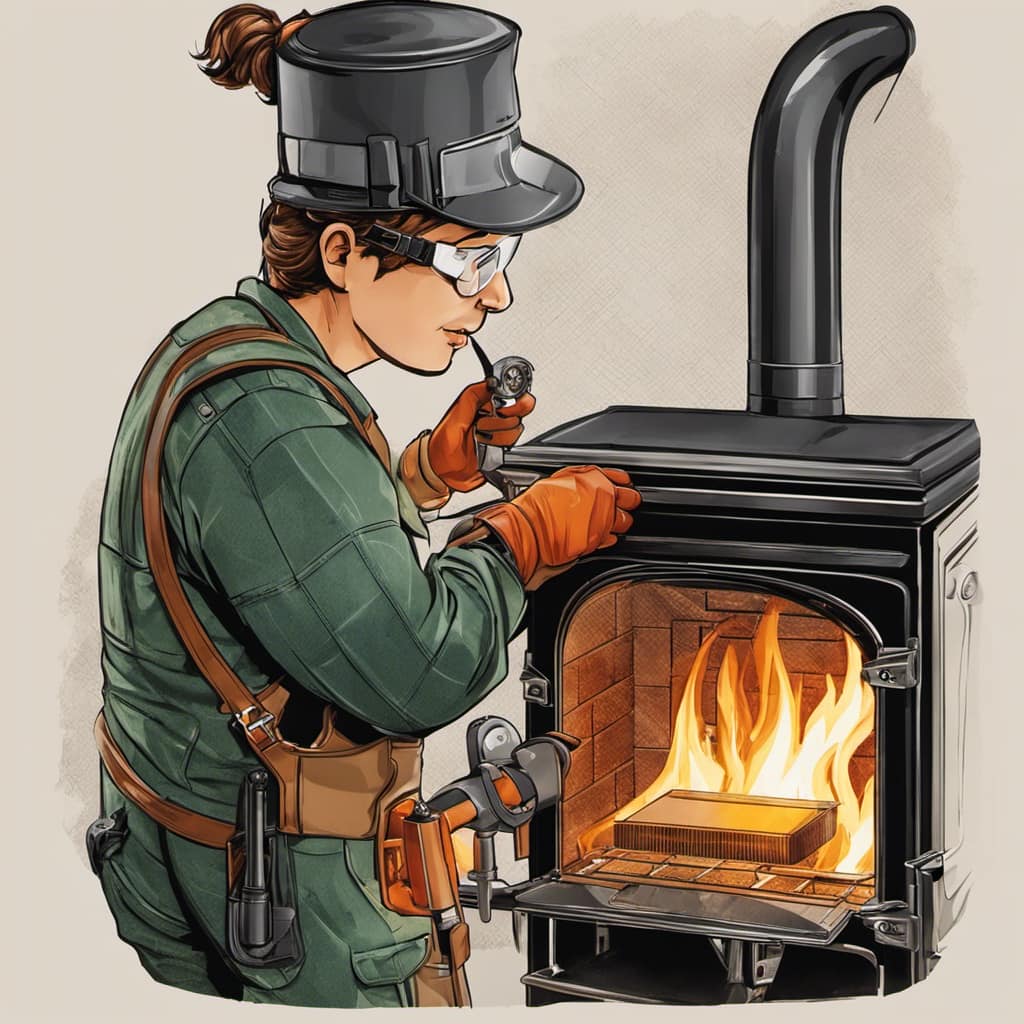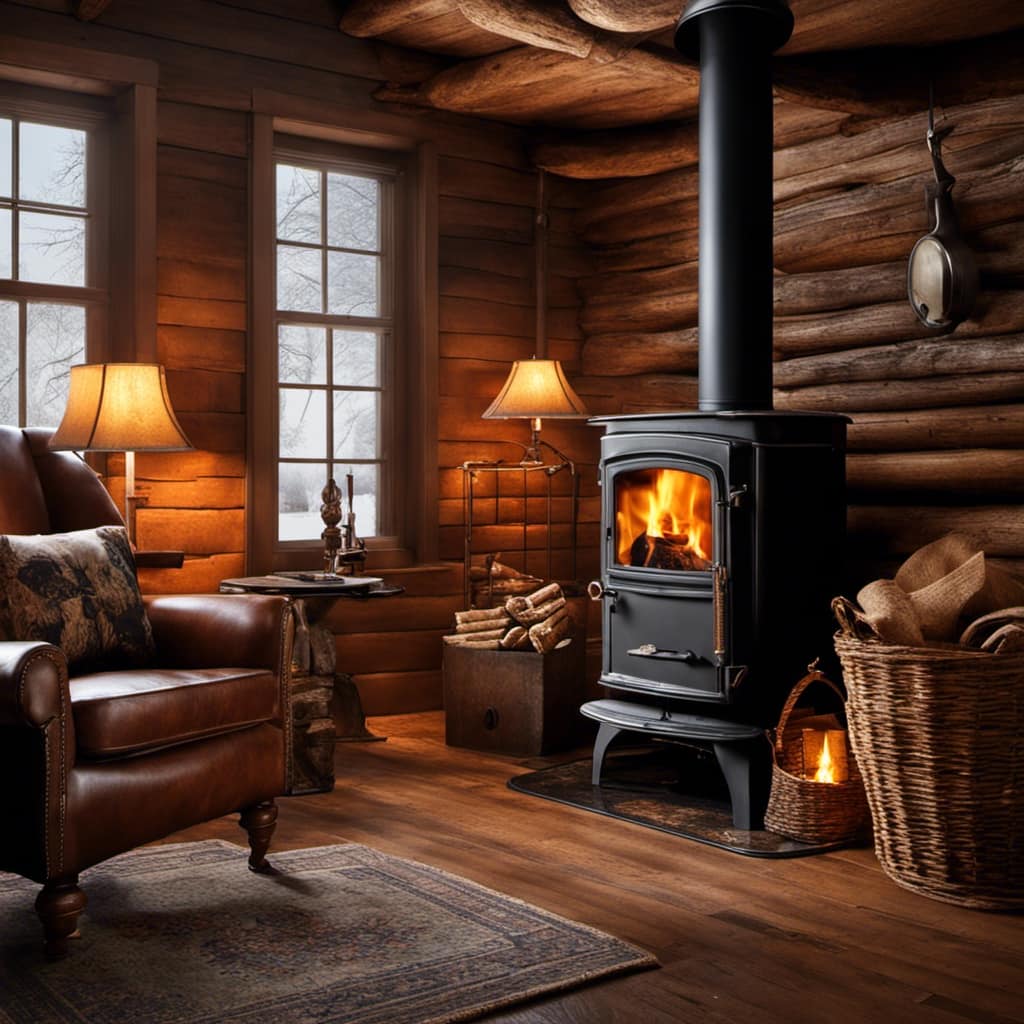
I have been pondering lately about the best time to replace the ceramic glass on my wood stove. Through my research, I have learned about the typical signs of wear to look out for, as well as the average lifespan of ceramic glass.
In this article, we’ll explore the environmental factors that affect durability, the importance of regular maintenance and inspection, and expert tips for extending the lifespan of ceramic glass.
So let’s dive in and learn when it’s time for a replacement!
Key Takeaways
- Signs of wear and tear include small scratches on ceramic glass, difficulty retaining heat, and the risk of cracks or shattered glass.
- Ceramic glass typically lasts 5 to 10 years and should be replaced if it has cracks or chips, discoloration or cloudiness, or soot and creosote buildup.
- Environmental factors such as temperature fluctuations, moisture exposure, and harsh weather conditions can affect the durability of ceramic glass.
- Regular maintenance and inspection are important to prevent hazards, detect issues early on, extend the lifespan of ceramic glass, and ensure optimal performance of the wood stove.
Common Signs of Wear and Tear
I’ve noticed a few small scratches on my wood stove’s ceramic glass, which are common signs of wear and tear. It’s important to keep an eye out for these signs of damage to ensure the safety and efficiency of your wood stove.
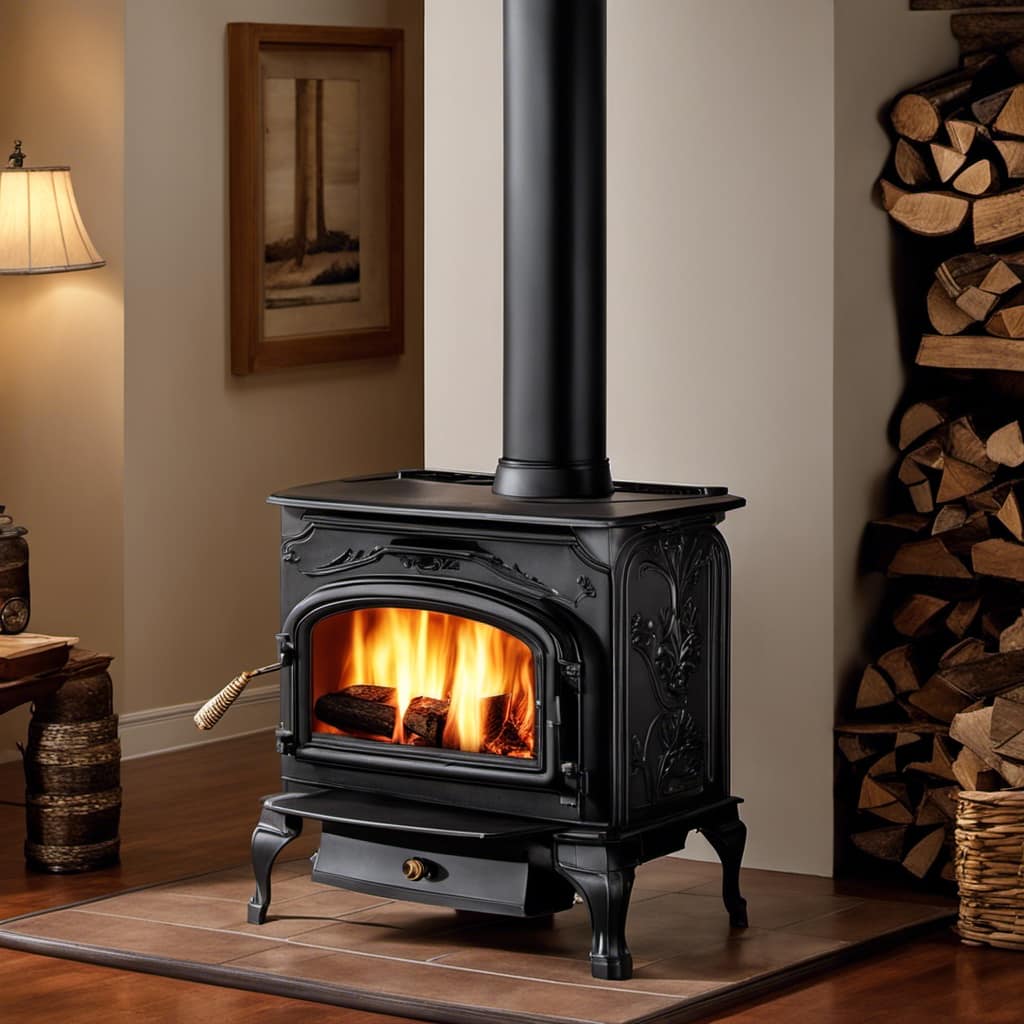
Scratches on the ceramic glass can affect the stove’s ability to retain heat and can lead to cracks or even shattered glass if not addressed. To prevent wear and tear on the ceramic glass, it’s important to handle it with care and avoid using abrasive materials when cleaning.
Regular maintenance, such as cleaning with a soft cloth and using gentle cleaning products specifically designed for ceramic glass, can help prolong the life of your wood stove’s glass and prevent further damage.
Recommended Lifespan of Ceramic Glass
The recommended lifespan of ceramic glass in a wood stove is typically around 5 to 10 years, depending on usage and maintenance. It’s important to keep an eye out for signs of wear to ensure the safety and efficiency of your wood stove.
One of the common signs of wear is the appearance of cracks or chips on the ceramic glass. These can weaken the glass and increase the risk of it shattering under high temperatures.
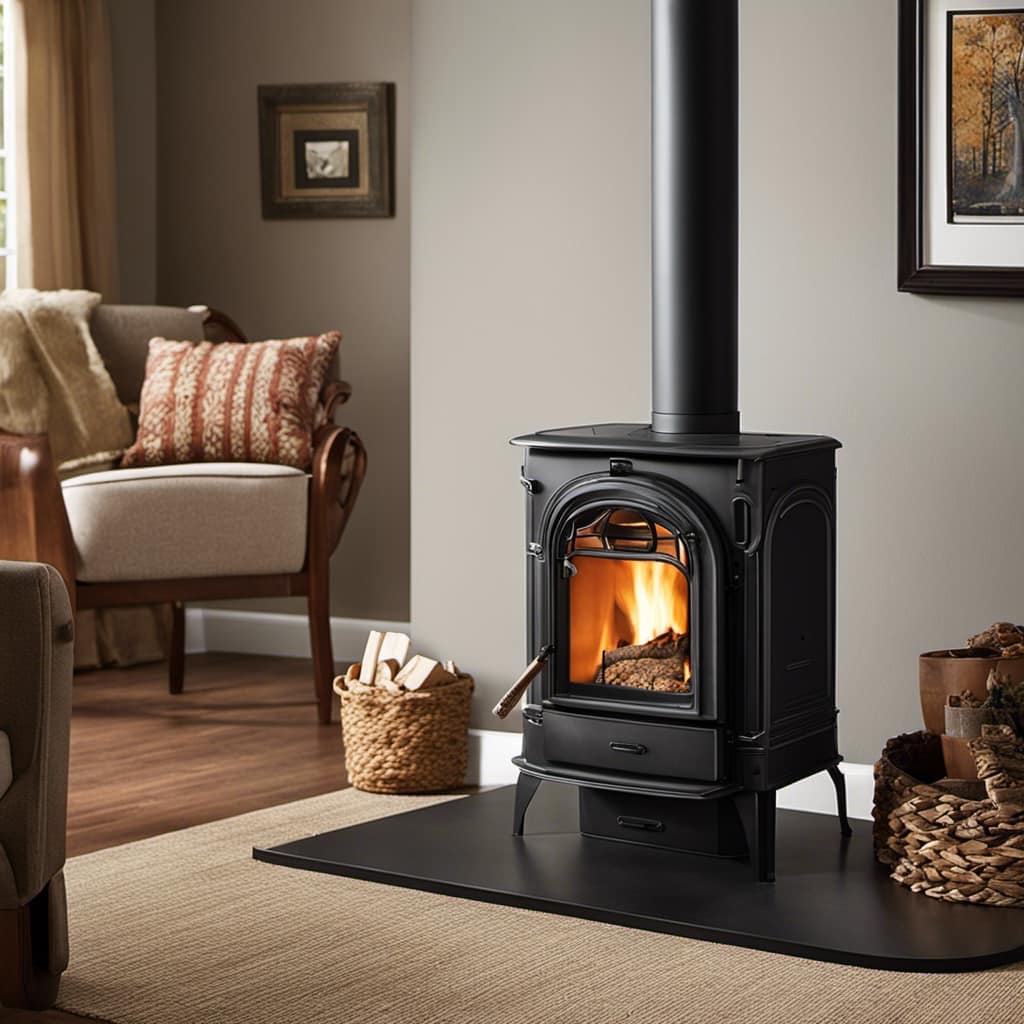
Another sign to watch for is discoloration or cloudiness on the glass surface, which indicates a buildup of soot and creosote. This can reduce the visibility of the fire and hinder the heat transfer.
If you notice any of these signs, it’s recommended to replace the ceramic glass to maintain the optimal performance of your wood stove.
Environmental Factors That Affect Durability
There are several environmental factors that can affect the durability of ceramic glass in a wood stove. Temperature fluctuations and exposure to moisture are two key factors. Weather conditions also play a significant role in determining how well the ceramic glass will hold up over time.
Extreme heat and rapid temperature changes can cause the glass to expand and contract. This can lead to cracks or even shattering. Moisture, on the other hand, can corrode the glass and weaken its structural integrity.
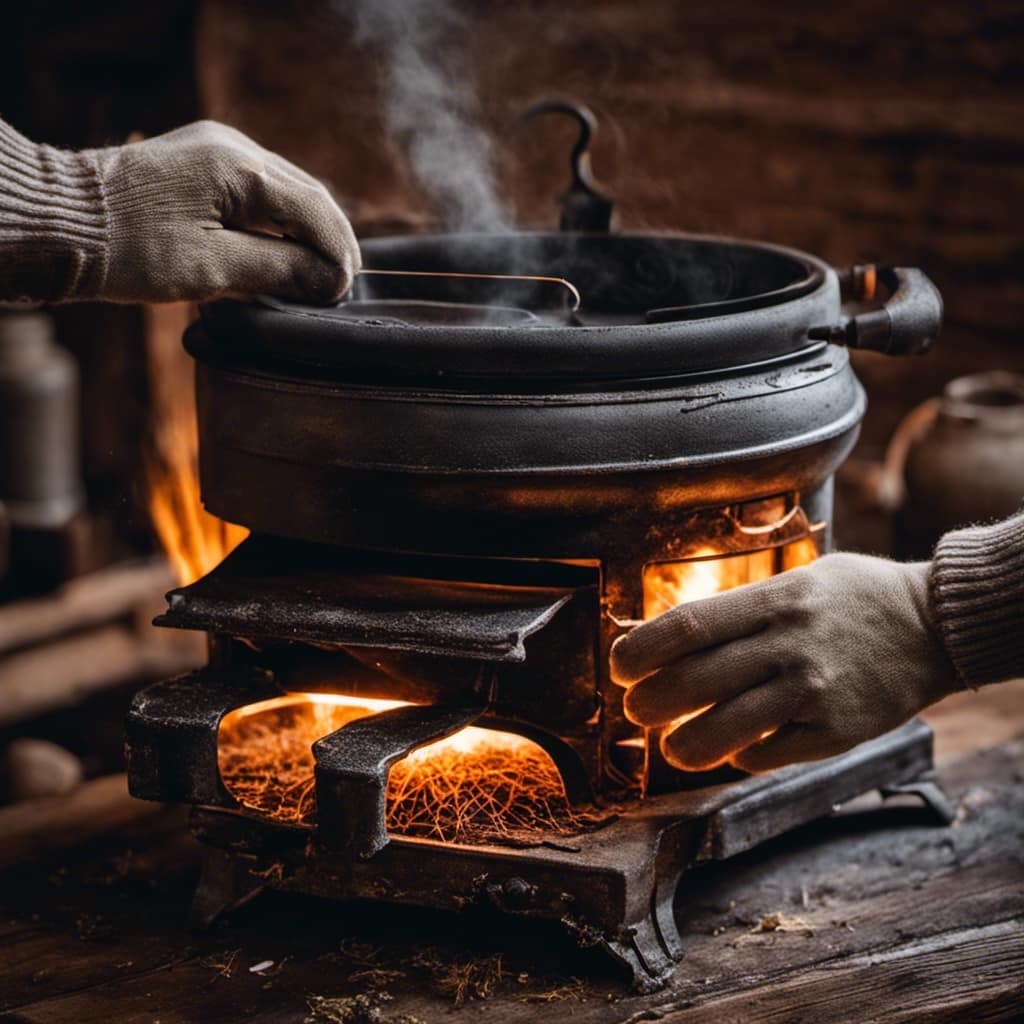
In addition to temperature and moisture, harsh weather conditions such as hail or strong winds can compromise the impact resistance of ceramic glass. This can result in damage to the glass and affect its overall durability.
Regular maintenance and inspection are crucial to ensuring the longevity of ceramic glass in a wood stove. By identifying any signs of damage early on, proper repairs or replacement can be done promptly. This prevents further issues and ensures the stove’s optimal performance.
Importance of Regular Maintenance and Inspection
As someone who owns a wood stove with ceramic glass, I understand the importance of regular maintenance and inspection to ensure its optimal performance.
Regular cleaning is essential to keep the ceramic glass clear and free from any residue that can affect its functionality. Neglecting this task can lead to potential hazards such as reduced heat transfer, increased risk of cracking or shattering, and compromised visibility of the flames.
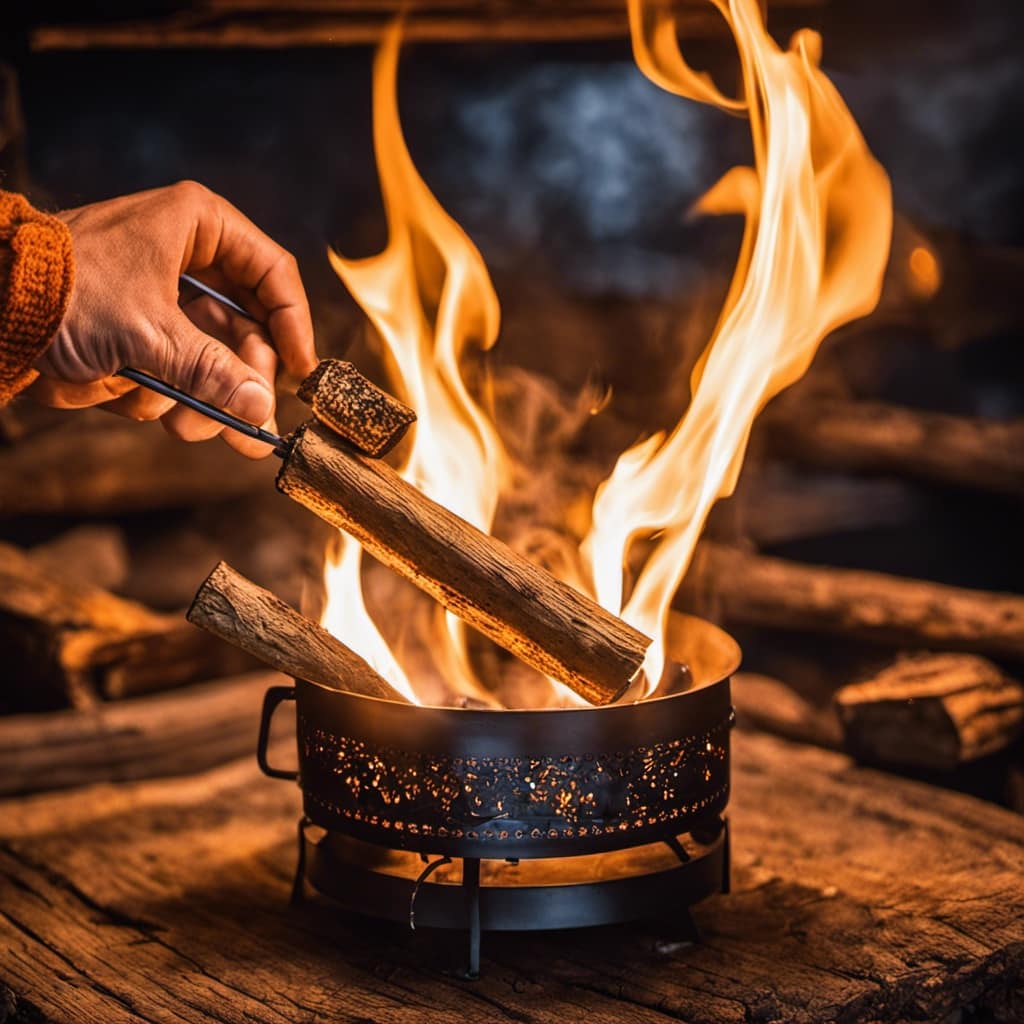
Additionally, regular inspection allows for the early detection of any issues or damage that may require immediate attention. By addressing these problems promptly, you can prevent further damage and extend the lifespan of your ceramic glass.
Now, let’s delve into some expert tips for extending the lifespan of ceramic glass.
Expert Tips for Extending the Lifespan of Ceramic Glass
Regularly cleaning and inspecting your wood stove’s ceramic glass can significantly contribute to extending its lifespan. The ceramic glass on a wood stove is not only a functional component but also adds to the aesthetic appeal of the appliance. To ensure its longevity, it is important to clean it properly and address any minor damages promptly. Here are some ways to clean ceramic glass and DIY repair methods:
| Cleaning Methods | Repair Methods |
|---|---|
| Vinegar and water | High-temperature silicone sealant |
| Baking soda and water | Ceramic glass cleaner |
| Newspaper and water | Replacement of damaged glass |
| Lemon juice and water | Polishing with a microfiber cloth |
| Commercial glass cleaners | Sanding and buffing |
Frequently Asked Questions
Can I Replace the Ceramic Glass in My Wood Stove With Regular Glass?
Yes, you can replace the ceramic glass in your wood stove with regular glass, but it is not recommended. Ceramic glass is specifically designed for high heat and thermal shock resistance, providing better safety and efficiency.
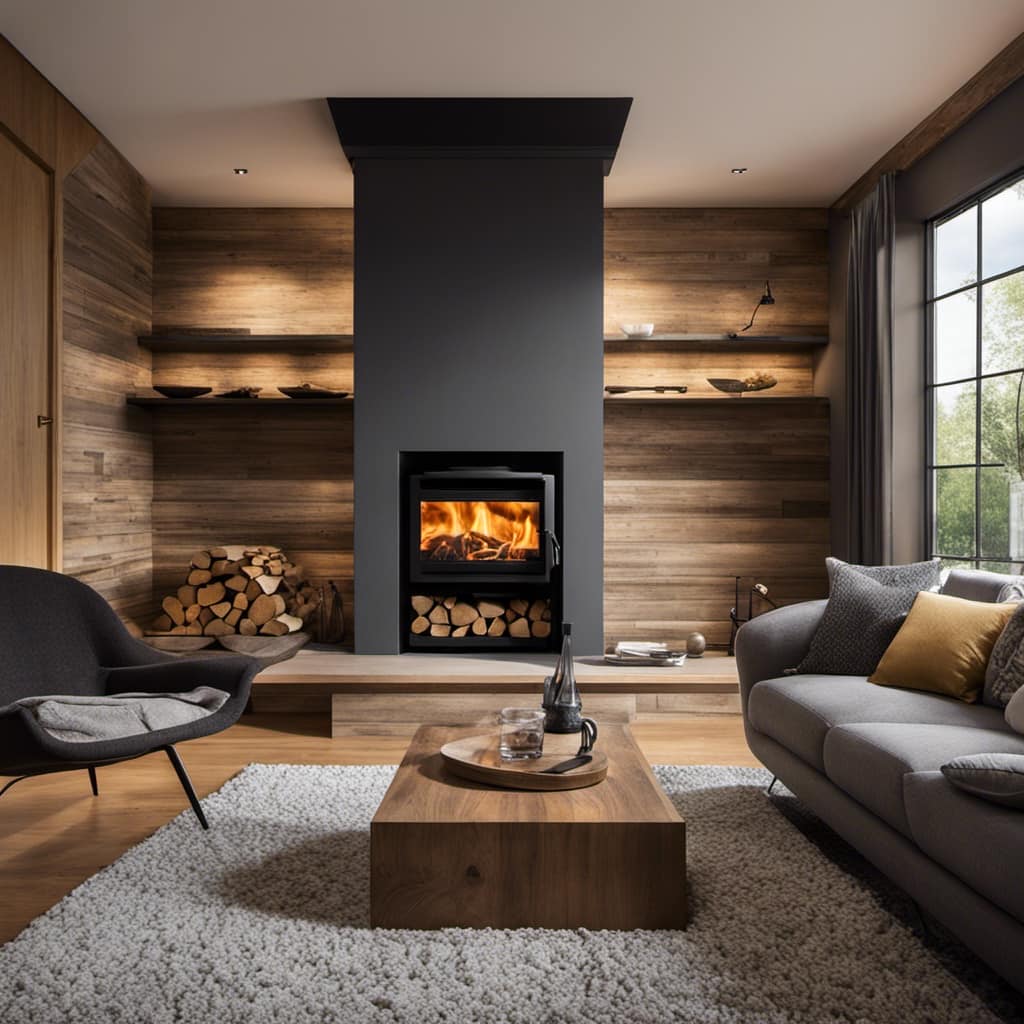
How Often Should I Clean the Ceramic Glass in My Wood Stove?
I clean the ceramic glass in my wood stove about once a month. It’s important to keep it clean for optimal performance. I find that using a specialized cleaner designed for wood stove ceramic glass works best.
Can I Use Abrasive Cleaners on the Ceramic Glass of My Wood Stove?
No, abrasive cleaners can damage ceramic glass. It’s important to use proper cleaning methods for wood stove ceramic glass. Regular cleaning with non-abrasive cleaners will help maintain its clarity and prevent scratches.
Is It Safe to Operate My Wood Stove With Cracked Ceramic Glass?
It’s important to replace cracked ceramic glass on a wood stove as soon as possible. Operating with a crack can be dangerous and compromise the stove’s efficiency. Regular maintenance can help prevent cracks.
Can I Replace the Ceramic Glass in My Wood Stove Myself, or Do I Need to Hire a Professional?
I can replace the ceramic glass in my wood stove myself, but it’s recommended to hire a professional. DIY replacement may save on cost, but a professional ensures proper installation and guarantees safety.
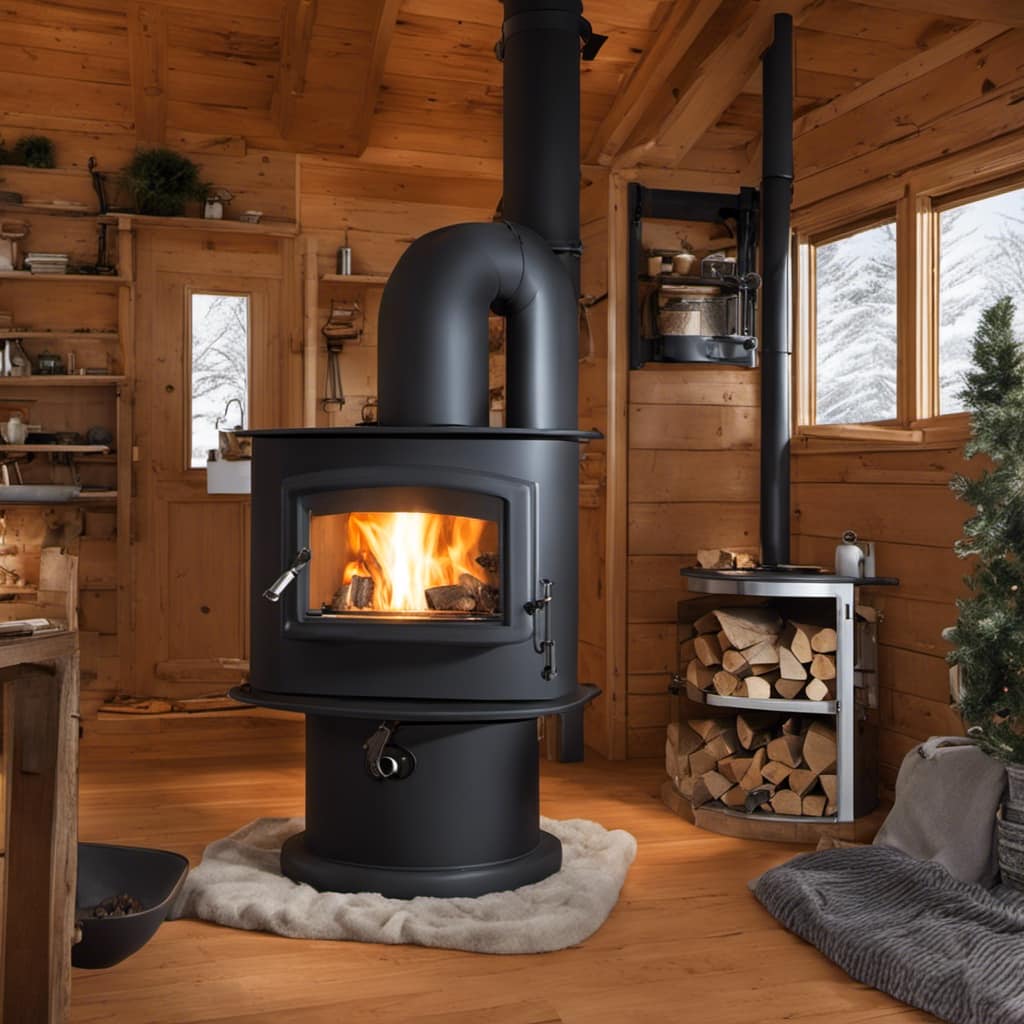
Conclusion
In conclusion, knowing when to replace the ceramic glass on your wood stove is crucial for maintaining safety and efficiency.
While some may argue that replacing the glass can be expensive, it’s important to prioritize the well-being of your home and loved ones.
Regular maintenance and inspection, along with considering environmental factors, can help extend the lifespan of ceramic glass.
By staying proactive and addressing signs of wear and tear, you can ensure a longer-lasting and more reliable wood stove.
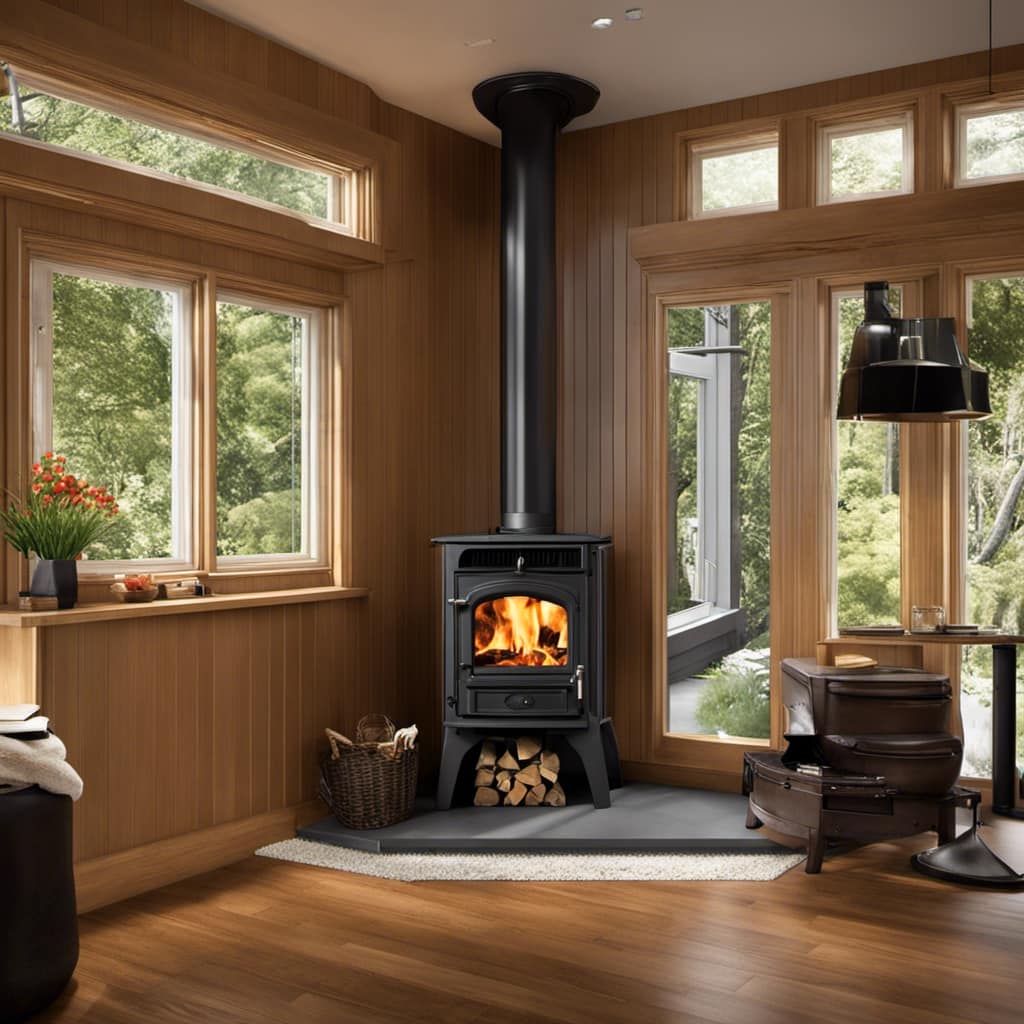
Growing up surrounded by the vast beauty of nature, Sierra was always drawn to the call of the wild. While others sought the comfort of the familiar, she ventured out, embracing the unpredictable and finding stories in the heartbeat of nature.
At the epicenter of every remarkable venture lies a dynamic team—a fusion of diverse talents, visions, and passions. The essence of Best Small Wood Stoves is crafted and refined by such a trio: Sierra, Logan, and Terra. Their collective expertise has transformed the platform into a leading authority on small wood stoves, radiating warmth and knowledge in equal measure.

